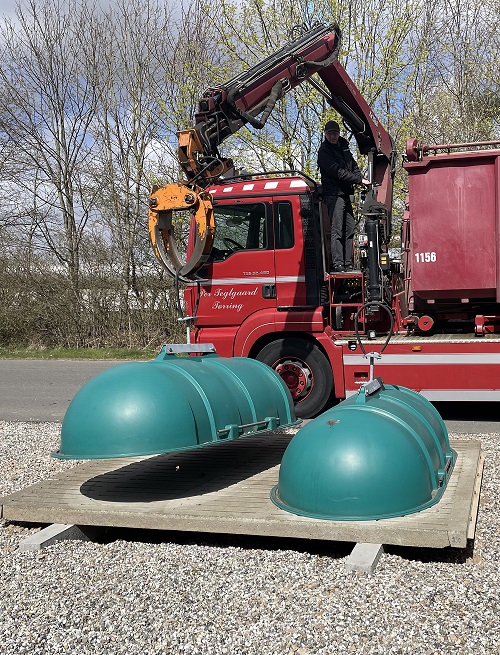
Syddanmark: Between Tønder and Vojens – driver finds his way better than the GPS
This summer it will be 18 years since truck driver Tommy Andersen got behind the wheel and drove his first route to pick up animals for Daka. Farmers have become good at both creating good access roads and registering animals, he says.
In his own words, Tommy Andersen has been on routes for Daka to pick up animals “since he could crawl”. His father was a truck driver and had Daka as a customer, and in 2004 Tommy Andersen started driving for his father himself.
“It’s a family business, it’s my brother who runs the company now. But I’ve always been involved, and this summer I’ll have been driving for 18 years – so that’s a lot of summers and a lot of animals,” says the truck driver.
The day always starts in Tønder for Tommy Andersen, and the route depends on registrations of course, but he often drives around Højer and up to Ribe. Sometimes the route goes all the way past Vojens, before he finally drives up to Vejen or Bylderupbov to swap the wagon with the day’s load for an empty one.
“I have a screen in the car where I can see the day’s stops. It also suggests an order and a route, but I don’t always agree with the GPS. I know all the shortcuts, so sometimes I can make it faster by going another way,” he explains with a smile.
Over the years, farms have improved their pick-up points, and they’ve also gotten better at registering the correct number of animals, as well as the correct species.
“Several have moved the site so it’s easy to get to. In the past, I often had to go round the back of a property and drive through a lot of mud. Now the surface is much better, so it’s much easier especially for us who drive four-wheel-drive trucks,” he explains and continues:
“A lot of people have also become more accurate when they’re signing on (animals, ed.). It’s not perfect, of course, but on the whole it fits and usually works out. In the past there was a tendency to just throw three extra sows on the site, then there was no room in the truck when I got to the end of the route. That meant I either had to drive up and tip (unload, ed.) and then drive out again, so the route was much longer, or I had to come back a day later, or sometimes not until two days later,” he adds.
Registration of species is crucial
When Tommy Andersen has to mention the small change that will mean the most for his work, it is that the farms must register the correct species: “The farms at the end of the route, they must also be collected. If a suckling calf is registered and there is a cow when I get there, then that can determine whether I have room for the animals I need to bring in the afternoon,” he explains seriously.
So correct registration of species and numbers is important. Even if the registration is done at the last minute, it is still helpful. Truck routes are updated every five minutes, so if the animal is registered first on the day, it can be picked up the same day in some cases, and even five minutes after registration in a few cases.
“If the box is full or the weight is maxed out, I can’t take the animal. The correct registration really makes a difference for us. If a different species is registered than the one I’m going out for, that can be enough to make the difference between whether I can bring it at all.”
Slatted floor, piglet containers and lifting rings
The layout of the collection area is important. Containers must be placed at a distance from each other and from the screening. This is necessary to give the driver room to dig around the piglet containers.
“Just 20 centimetres is fine, if it’s less than that then I can end up tipping them over. I can grab them more easily if there’s space between them and the wall. If they fall, they can break, and if they are square, they are also easier to break than if they are round, because the square ones are harder to grab.”
However, Tommy Andersen still has more praise for the farms for their collection sites.
“More and more places have animals on slatted floors, and they also face the right way. When the animals are on something, they are much easier to grab. Often it’s flooring left over from a barn, and it’s really nice and 100 times better than pallets.”

Kontakt

Lars Jørgen Nielsen
E-Mail: ljn@daka.dk
Phone: +45 5156 4092
Mobile: +45 5156 4692

